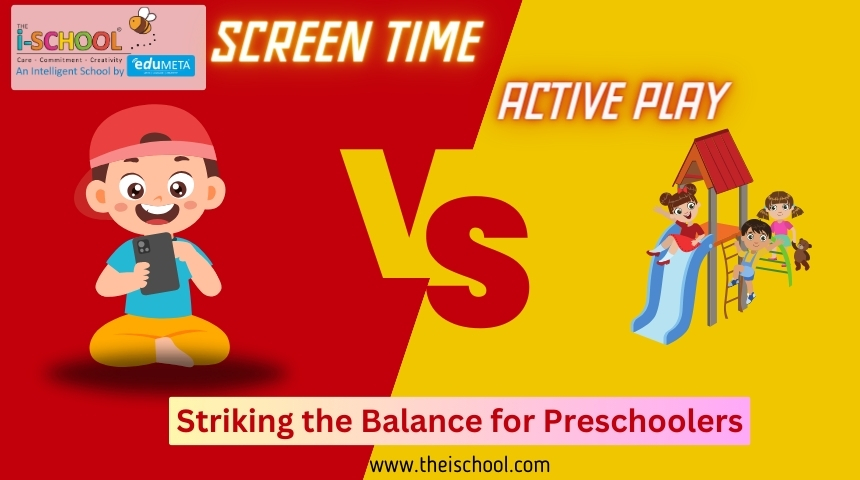Screen Time vs. Active Play: Striking the Balance for Preschoolers

The world of screens is everywhere these days, and preschoolers are no exception. From tablets to TVs, they offer a captivating world of colors, sounds, and interactive experiences. But with all this digital entertainment, how do we balance screen time with the importance of active play?
The Power of Play
For young children, active play is more than just fun; it’s essential for healthy development. Here’s why:
- Boosts the Body: Active play builds strong muscles and bones, improves coordination, and gets those little hearts pumping, promoting overall health.
- Sparks Imagination: Unstructured playtime allows for creative exploration, problem-solving, and building a sense of self.
- Social Butterfly Skills: Playing with others teaches children valuable skills like sharing, taking turns, and communicating effectively.
- Emotional Growth: Active play helps children manage emotions, express themselves freely, and build resilience.
The Allure of Screens
Screens can offer educational benefits, from learning new vocabulary to fostering early literacy skills. But too much screen time can have downsides:
- Couch Potato Power: Less active time can lead to weight gain and hinder physical development.
- Attention, Please! Screens can be distracting and shorten attention spans, making it harder to focus on longer tasks.
- Social Disconnect: Overreliance on screen time can limit opportunities for crucial social interaction and emotional development.
Finding the Golden Ratio
So, what’s the magic number for screen time? The American Academy of Pediatrics recommends limiting screen time for preschoolers to under two hours a day. It’s more about quality over quantity. Here’s how to strike the balance:
- Make Active Play the Main Course: Fill your child’s day with active fun like running, jumping, building blocks, playing pretend, or exploring outdoors.
- Choose Quality Screen Time: Opt for educational programs or apps that encourage interaction and learning.
- Co-viewing is Key: Watch shows together, talk about what you see, and answer questions. This helps them understand what’s happening on screen.
- Set Screen Time Limits: Be clear and consistent about screen time rules. Offer engaging alternatives when it’s time to turn off the screens.
The Bottom Line
It’s all about balance! By prioritizing active play and making screen time a mindful choice, you can help your preschooler thrive physically, socially, and emotionally. Remember, the best learning happens through active exploration and interaction with the world around them. So, get out there, play together, and let the learning adventures begin!
